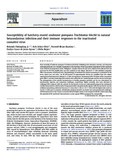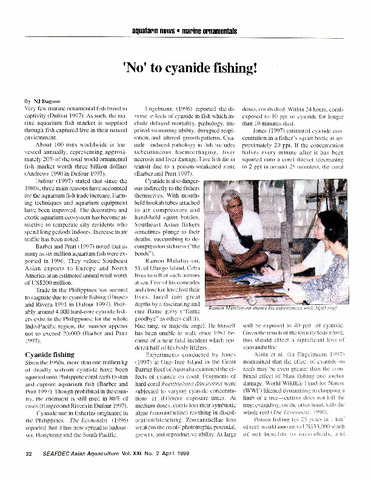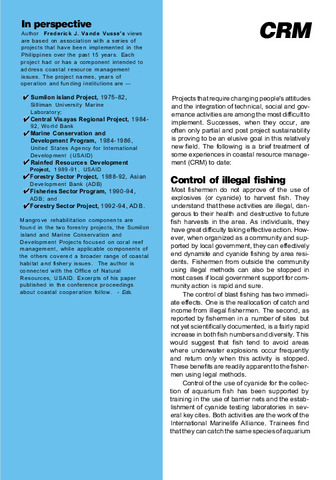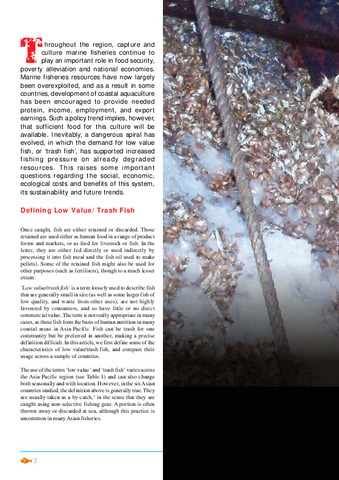Susceptibility of hatchery-reared snubnose pompano Trachinotus blochii to natural betanodavirus infection and their immune responses to the inactivated causative virus

View/
Request this document
Date
2011Author
Page views
246Metadata
Show full item recordCited times in Scopus
Share
Abstract
Mass mortality of snubnose pompano Trachinotus blochii fry exhibiting dark coloration, anorexia, and abnormal swimming behavior was recently documented at the hatchery of the Aquaculture Department of the Southeast Asian Fisheries Development Center, Philippines. Samples of brain tissues were collected from affected fish and processed for RT-PCR amplification and virus isolation in cell culture. Infected E-11 cells exhibited cytopathic effect characteristic of betanodavirus. Histopathology of moribund fish showed pronounced vacuolations in the brain, spinal cord, and retina. An RT-PCR product of approximately 430 bp was amplified from the culture supernatant of betanodavirus-infected E-11 cells and sequenced. Sequencing of the T4 region of the coat protein gene (RNA 2) revealed clustering of the isolated virus within the red-spotted grouper nervous necrosis virus type. The pathogenicity of the isolated betanodavirus in healthy pompano juveniles and fry was determined via intramuscular injection and immersion challenges, respectively. Higher mortality rates were obtained in challenged fish compared with the controls. An inactivated vaccine was subsequently prepared by treating the clarified betanodavirus with formalin. Pompano juveniles intraperitoneally injected with the inactivated vaccine exhibited neutralizing antibodies from days 15 (mean titer 1:240) to 125 (1:560) with the highest titer noted at day 64 (1:2240) post-vaccination. Additionally, pompano fry bath-vaccinated and consequently bath-challenged with betanodavirus at day 35 post-vaccination showed higher survival rate compared with the control, indicating the potential of the inactivated betanodavirus vaccine against VNN in pompano fry and juveniles.
Keywords
BetanodavirusSuggested Citation
Pakingking, R. V., Jr., Mori, K.-I., Bautista, N. B., de Jesus-Ayson, E. G., & Reyes, O. (2011). Susceptibility of hatchery-reared snubnose pompano Trachinotus blochii to natural betanodavirus infection and their immune responses to the inactivated causative virus. Aquaculture , 311(1-4), 80-86. https://doi.org/10.1016/j.aquaculture.2010.11.035
Subject
Collections
- AQD Journal Articles [1222]
Related items
Showing items related by title, author, creator and subject.
-
'No' to cyanide fishing!
Dagoon, N. J. (Aquaculture Department, Southeast Asian Fisheries Development Center, 1999) -
CRM in the Philippines: Lessons learned
Southeast Asian Fisheries Development Center, Aquaculture Department (Aquaculture Department, Southeast Asian Fisheries Development Center, 1996)Philippine coastal communities can become capable fishery resource managers and that their management practices can become largely self-sustaining if the project approach focuses on assisting fishermen to learn how to help ... -
Prized commodity: Low value/trash fish from marine fisheries in the Asia-pacific region
Staples, Derek; Funge-Smith, Simon (Secretariat, Southeast Asian Fisheries Development Center, 2005)The use of the terms 'low value' and 'trash fish' varies across the Asia-Pacific region and can also change both seasonally and with location. This article defines low value/trash fish as 'Fish that have a low commercial ...




